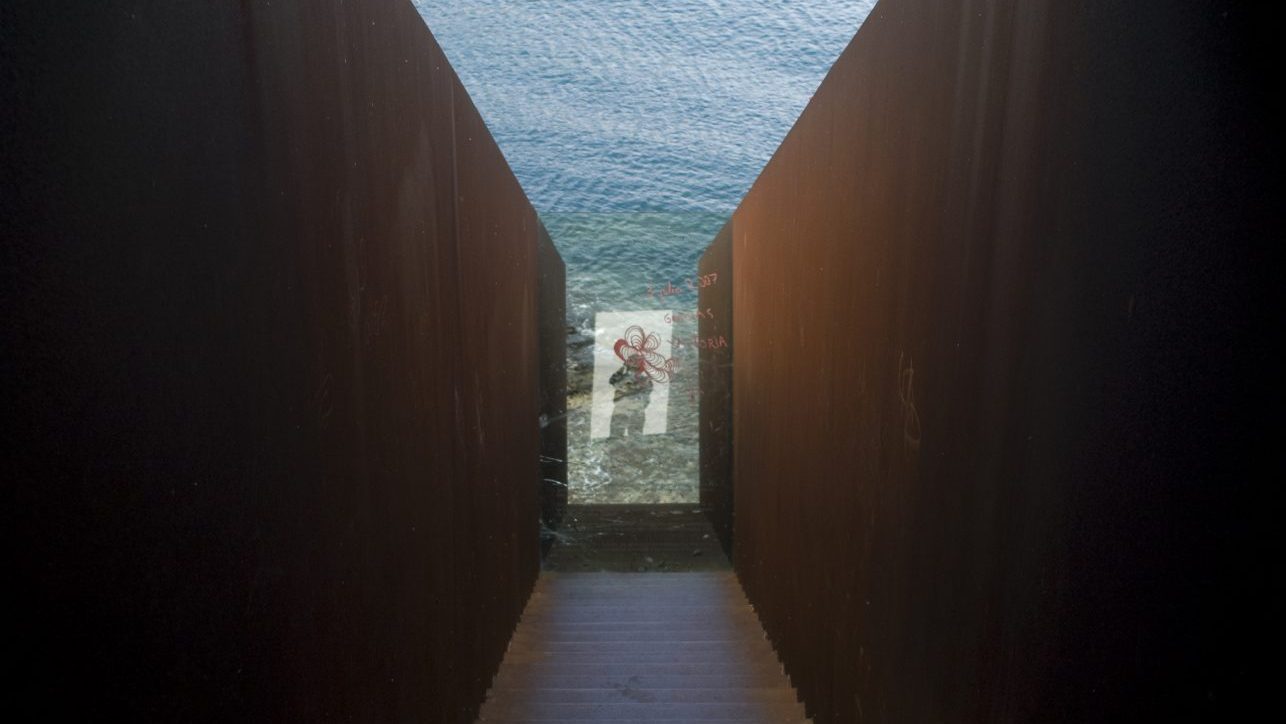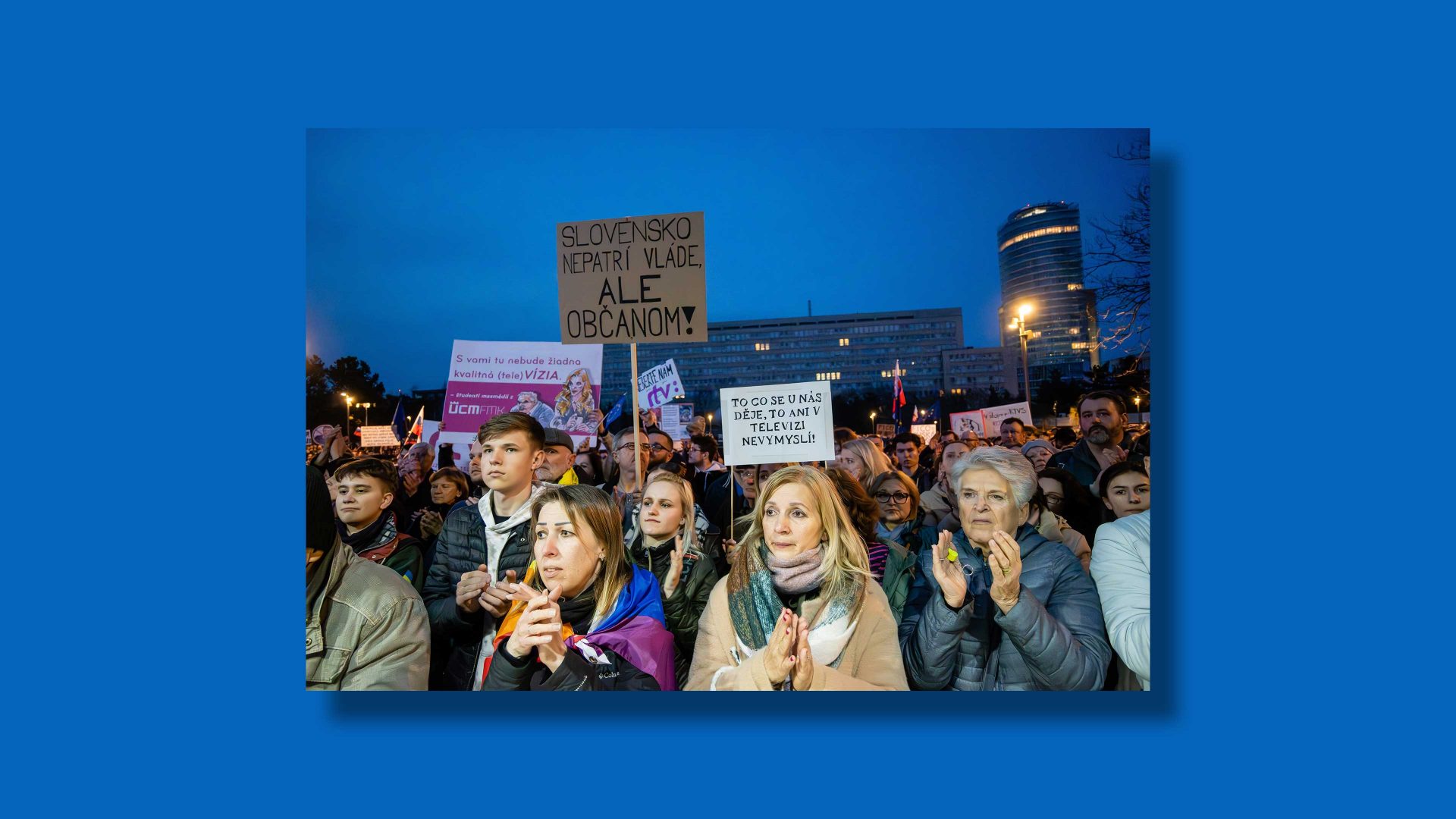I’m inside a narrow metal tunnel descending steeply to the sea, each of my steps accompanied by an ominous clang. As I adjust to the sudden glare of the foaming waves below, the Tramuntana north wind rushes in to unsettle me further. I am going to the brink with Benjamin, prevented from dropping off the cliff only by a thick sheet of glass inscribed with a quote from the German-Jewish thinker: “It is more difficult to honour the memory of the anonymous than that of the renowned’’.
When I turn and start back up the stairs, I’m dazzled by a shattering of perspective and by the bright blue sky at the upper end of the tunnel. I clamber back to light and life; Benjamin was not so lucky.
This year marks the 30th anniversary of Dani Karavan’s Passages, his extraordinary memorial for Walter Benjamin in Portbou, a pretty town nestling between the foot of the Pyrenees and the Mediterranean, on the border between north-east Catalonia and south-east France. History boards appear at nearly every turn, detailing the 100,000 who fled this way into France during the Spanish civil war (1936-39), and the 300,000 who followed them when Franco’s reign of terror began.
But it is Benjamin’s story that dominates. I discover a photograph of him in the tiled porch of the municipal headquarters. A beautiful old building about to be renovated bears the sign “Biblioteca Walter Benjamin”, and the scholar’s story is documented all over town.
Standing under the great glass roof of a train station that now sounds more like a menagerie, I picture its former role as a frantic transport hub for fugitives. When the second world war started, Jewish refugees like Benjamin, fleeing the other way to the Catalans the previous year, came down the French coast and over the Querroig summit, lured by the international train station at Portbou. From here, Benjamin intended to reach Lisbon, then board a ship to the US.
Back in town, I find a plaque on an elegant pastel-painted building. This was the guesthouse Francia where an exhausted Benjamin was allowed by the local authorities, who had just denied him entry into Spain, to stay for one night on September 25, 1940. I go to the narrow back street and look up at the second floor where the great thinker occupied room number four.
Convinced that he would be handed over to the Gestapo on the French border the following day, Benjamin, aged 48, took a morphine overdose and died slowly of a brain haemorrhage. In a final letter to friends that I find reproduced on a metal stand in the local cemetery, he wrote: “In a situation from which there is no escape, I have no option but to finish here in a small village in the Pyrenees where nobody knows that my life is draining away.’’
I climb the steps back to the station to take the 20-minute train to Figueres, birthplace of Salvador Dalí. Dalí was an avid reader, fascinated by classic literature (which he often illustrated), and by the ideas of his day in physics and philosophy. The mischievous surrealist fled the Spanish civil war and returned only in 1948 to questionably friendly relations with Franco, but he read Benjamin, 12 years his senior, including The Work of Art in the Age of Mechanical Reproduction (1935).
As I join the long queue for the theatre-museum Dalí designed, this year enjoying its 50th anniversary, I think of that essay in which Benjamin laments the “decay’’ of an artwork’s aura each time it is reproduced, and the loss of its “cult value’’ when exhibited in front of crowds. Yet he also hinted at the revolutionary potential of advances in technology, which the devious Dalí understood. When opening his museum in 1974, the man with the well-waxed 25cm moustache wished to show only photocopies of his works, but Madrid refused to fund the project unless originals were included.
Inside, I watch the visitors skip past the graphic works that demand closer attention, such as the Don Quixote series. Instead, they queue like penitents not to study but to photograph the 3D paintings, the giant lips, the gold mannequins, or to take selfies in front of the huge mural.
It’s Benjamin’s ‘’reception [of a work of art] in the state of distraction,’’ and it’s everything Dalí desired: uncritical adoration in a shrine to himself, commercial reproducibility (he could sign up to 4,000 blank sheets a day that would later carry a copied work), and a never-ending proliferation of his images as his acolytes, still in the museum, post their snaps on social media. In surrendering the aura of art, did the great performer-artist-manipulator, in his inimitable way, restore some of the magic and ritual?
‘’Sí, sí,’’ agrees a Fundació Gala-Salvador Dalí spokesperson during our discussion. ‘’People from around the world are more Dalinian than ever!’’
James Hopkin is an itinerant European writer and author



